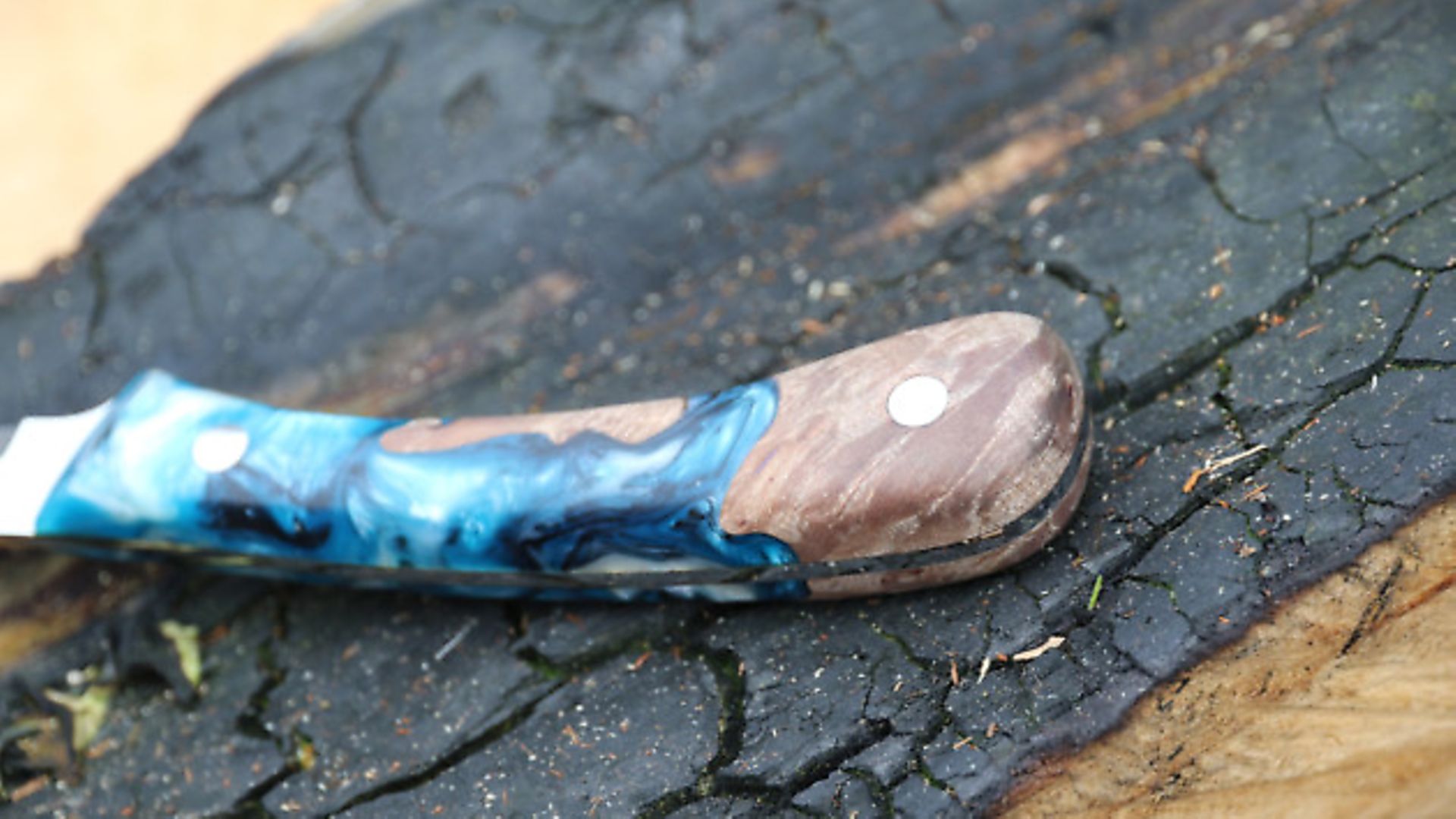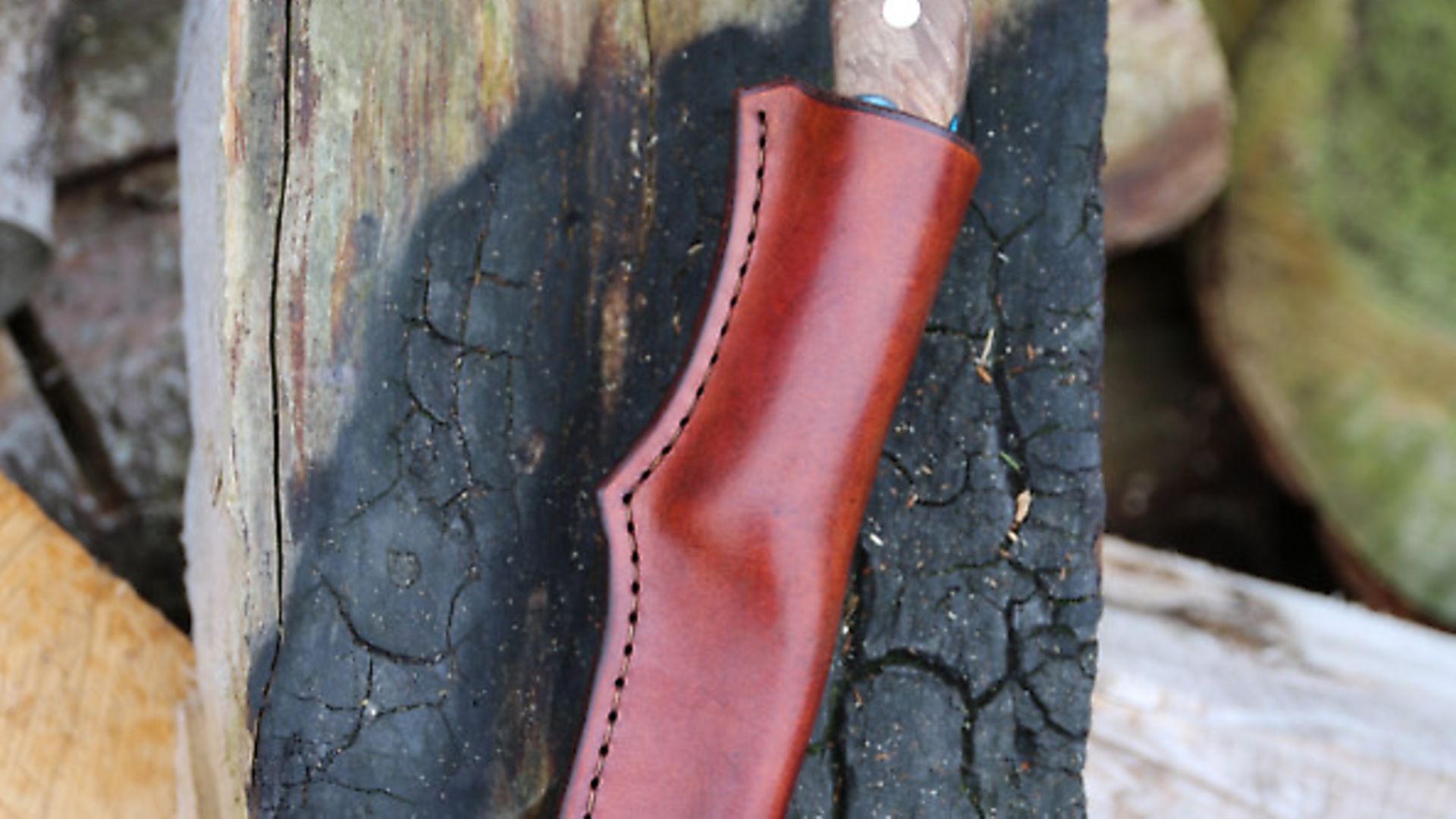Dom Holtam thinks Emberleaf’s latest is at the cutting edge of design, proving not all knives are created equal
 credit: Archant
credit: Archant
I am a bit of a puritan in some respects. I like stuff that looks good, but I like it even more when it looks good as a result of form following function. But I have to admit when I first got my hands on Emberleaf’s Cael knife, I had a few reservations.
First impressions are of the incredibly good-quality leather sheaths, made from thick but supple hide and with a generous belt loop. Pulling out the knife revealed a slender, almost delicate, blade and a handle looking more like jewellery than something for work in the deer larder.
This is a substance known as Shokwood – a stabilised wood and resin hybrid that comes in a variety of striking colour combinations, as well as being completely impervious to moisture and incredibly tough.
 credit: Archant
credit: Archant
Of course I can forgive the Emberleaf team for choosing something that will stand out in photographs. And if you want plain Micarta, that is fine. If you fancy a bit of buffalo horn, that’s cool too. Stabilised woods such as maple or poplar? No problem. Hell, they have even produced limited-edition knives in 40,000-year-old woolly mammoth ivory! There are over 2,000 options!
The AEB-L steel of the blade has a very good reputation with knife makers, being stainless, hard, easy to sharpen and with excellent edge stability. From new, Emberleaf says it has a sharpness of at least 6,000 grit – twice that of the surgical standard.
The Cael is a distinctively curved knife designed for processing game, specifically deer. The handle, like the blade, is shaped with game processing in mind. Some will prefer a grip shape that fits their fist, or one with a pronounced finger guard (an issue addressed by a second generation Cael design) but the Cael’s handle has a pronounced heel, optimised for carcass work, held with index finger along the spine of the blade and the other three fingers tucking the handle against the ball of your thumb.
 credit: Archant
credit: Archant
I was told to use the knife hard, which was not something I was initially keen to do with such a pretty and quite delicate-looking blade. However, in the interest of science I got over my reluctance.
A colleague of mine reckoned he had processed half a dozen deer before he gave me the knife to use and hadn’t sharpened it at all. Hard to believe given the edge on it, but I decided to carry on until it did need a sharpen. My gut feeling was one decent fallow buck should be enough.
I unzipped the briskets, did the legs and all the cavity work on a further six fallow deer and by the end the blade was only just beginning to dull and I could detect a few small nicks on the cutting edge. It would certainly have done more.
I have never used a knife that clings to an edge like the Cael does. And it was an absolute doddle to get back to shaving sharpness. A few strokes on a fine grit whetstone, a further dozen on a fine ceramic hone and then a couple of minutes on a leather strop. I know plenty of recreational stalkers who could larder their entire season’s worth of deer without needing to resharpen once.
 credit: Archant
credit: Archant
A sharp knife is a safe knife, of course, and I loved how the narrow blade and curved design gave great control and dexterity when working in the chest cavity but the strength and sharpness of the blade made light work of the heavier jobs.
All Emberleaf knives carry a lifetime guarantee against failure in normal use. And if you want to keep your Emberleaf blade in the best condition, they offer all owners a full service, clean, resharpen and strop for £12.50.
Stunning to look at, even better to use. A knife for life? You bet.
The Cael is available as an individual blade from around £372, depending on your choice of handle, or as part of a deer stalker’s twin set. All knives come with individual hand wet-formed and stitched leather sheath and are supplied in a velvet drawstring bag, housed within a stiff card Emberleaf logo box.
_____________________
You may also like:
Buying budget hunting gear - is £300 enough?
Finding abnormal lumps during the gralloch